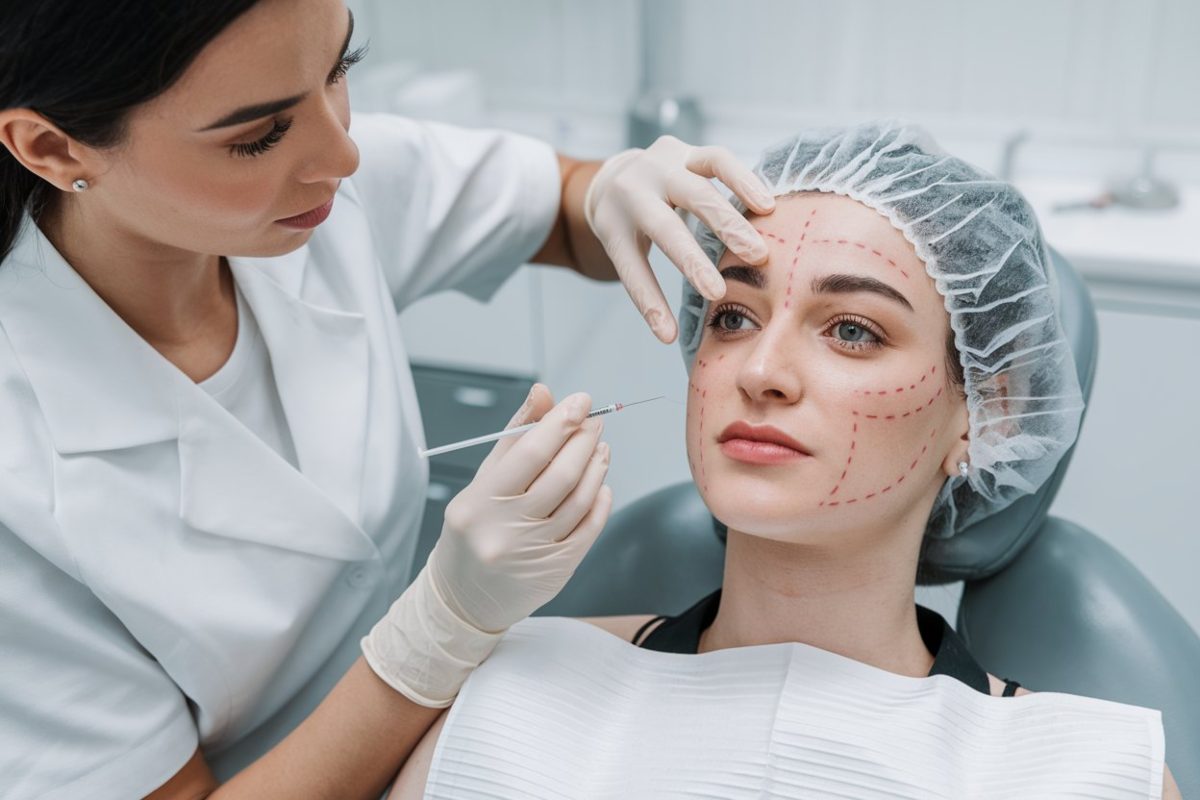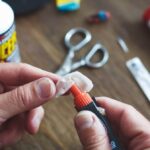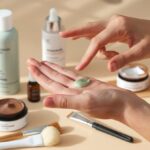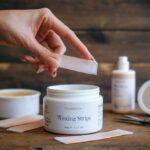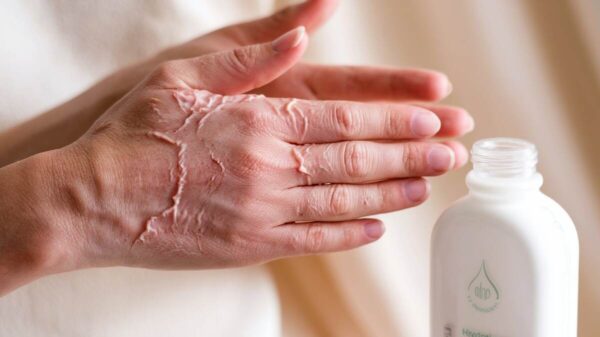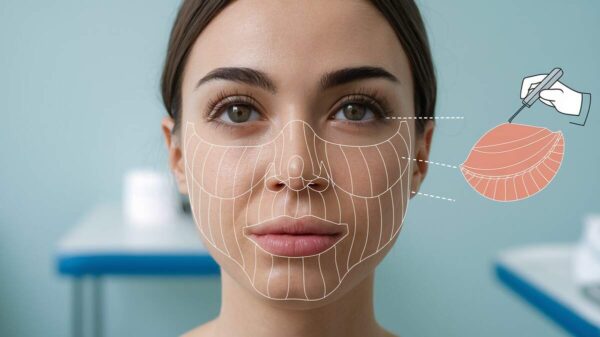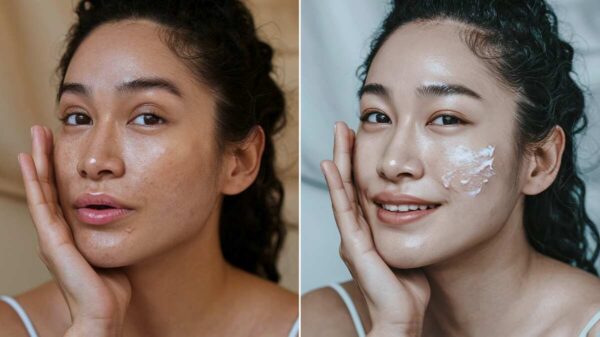PDO threads have emerged as a popular choice for non-surgical facial rejuvenation in the pursuit of youthful, radiant skin. Without requiring surgery, this minimally invasive procedure can improve face features, raise drooping skin, and lessen wrinkles. This comprehensive guide willWe’ll go into great detail about PDO threads, including their history, the actual procedure, its advantages and disadvantages, and what to anticipate both during and after the treatment.
What is a PDO threads?
Surgeons have safely employed absorbable medical sutures called PDO (polydioxanone) threads for many years. They were first used in aesthetic medicine in South Korea, where they were well-liked for their non-surgical capacity to lift the skin, promote collagen formation, and provide the illusion of younger skin. PDO threads are a great option for cosmetic operations since they comprise polydioxanone, a biocompatible substance that the body gradually absorbs.
Types of PDO Threads
Understanding the various types of threads that are accessible is essential when thinking about PDO thread lifts because each type has a specific function in facial rejuvenation. The primary five PDO thread types and their particular uses are listed below:
1. Mono Threads
Smooth, single-strand mono threads are mostly used to increase the firmness and texture of skin by promoting collagen formation. Usually placed beneath the skin in a mesh design, these threads give a mild lift without increasing volume. They are perfect for areas that require modest skin tightening and renewal, such as the neck, forehead, and under the eyes.
2. Cog Threads
Barbed threads called “cog threads” are intended to cling to the skin and pull up drooping tissues to produce a more noticeable lifting effect. These threads provide significant contouring and are ideal for people with moderate skin laxity who want a lift akin to a small facelift. They are frequently utilized in the mid-face, jowls, and jawline. The barbs aid in defining the facial anatomy.
3. Screw Threads
Trew threads improve volume and lift by strengthening their hold on the surrounding tissues. These threads are usually employed in regions where volume addition is just as crucial as skin lifting, such as the cheeks or nasolabial folds. They are perfect for people who need a volumizing and lifting impact in specific places because their design enhances the surface area for greater hold.
4. Tornado Threads
Tornado threads are a type of screw thread with an even more twisted pattern that provides better volumizing and lifting properties. When more substantial lifting is needed, like in the cheekbones and jawline, they work especially well. Tornado threads offer a more powerful and dramatic lift for those with more severe indications of aging who require more potent rejuvenation.
5. Double Needle Threads
Double-needle threads are made for accurate lifting, especially when more intricate treatment is required in delicate areas like the brow or the area around the eyes. Two needles are used to inject these threads, enabling precise and focused contouring in particular regions. This thread is perfect for patients looking for accurate and targeted lifting since it guarantees a more tailored and natural-looking outcome in delicate facial areas.
Choosing the Right PDO Thread
Several considerations, such as your skin type, the locations you wish to treat, and the outcomes you hope to achieve, influence your choice of PDO thread. During a consultation, your practitioner will evaluate your demands and suggest the best thread type to help you reach your objectives.
By being aware of these many PDO thread kinds, you may make an educated choice regarding your non-surgical face rejuvenation options and guarantee the greatest outcomes catered to your specific requirements.
How PDO Threads Work
PDO threads are helpful because they can physically raise the skin and activate the body’s healing process. When they are put into the skin, the threads form a framework that supports the surrounding tissue. The skin is immediately supported, which improves facial features and lessens drooping.
When the body detects the threads as foreign material, it produces more collagen and elastin as part of a healing response. The protein collagen provides skin with strength and suppleness, while elastin aids in the preservation of skin’s structure. The newly generated collagen continues to support the skin while the threads dissolve over time, usually within six months, resulting in long-lasting lifting and tightening results.
Areas Can Be Treated with PDO Threads
Because of its versatility, PDO threads can treat various facial and neck conditions. Typical treatment locations include the following:
| Area | Description |
|---|---|
| Cheeks | PDO threads lift and contour the cheeks, restoring volume and definition to enhance cheekbones and smooth sagging in the mid-face region. |
| Jawline | PDO threads can define and tighten the skin around the jawline, reducing jowls and improving the contour of the lower face. |
| Nasolabial Folds | PDO threads address deep lines from the nose to the mouth corners, reducing the appearance of nasolabial folds and providing a youthful look. |
| Under-Eye Area | PDO threads help reduce puffiness and dark circles under the eyes by tightening the skin and offering a refreshed appearance. |
| Forehead | PDO threads lift and smooth the forehead area, reducing fine lines and wrinkles for a more youthful appearance. |
| Brow Area | PDO threads lift the brows and improve the appearance of drooping eyelids, creating a more youthful and alert look. |
| Neck | PDO threads treat the neck area to provide tightening and lifting, improving the overall appearance and reducing signs of aging. |
| Mouth Corners | PDO threads lift and smooth the corners of the mouth, reducing the appearance of downturned corners for a more pleasant expression. |
PDO Threads Benefits
Immediate and Long-Lasting Results
The instantaneous enhancement of facial look following PDO thread lifts is among its most alluring features. Following the operation, patients frequently experience a lift in the treated areas; as collagen production rises over the coming weeks, the results will continue to improve. PDO threads are a long-lasting alternative to other non-surgical procedures like fillers or Botox because their effects can continue for up to 18 months.
Non-Surgical and Minimally Invasive
PDO thread lifts are a desirable option for people who forego the dangers, scarring, and prolonged recovery period associated with surgery since they provide a non-surgical substitute for standard facelifts. With just local anesthetic usually needed, the operation is minimally invasive and has a short recovery period, Permitting patients to resume their regular activities rapidly.
Natural-Looking Results
PDO thread lifts produce modest and natural-looking outcomes, in contrast to many cosmetic treatments that may leave the patient looking extremely tight or unnatural. Without significantly changing the patient’s look, the threads enhance facial features and reduce sagging by interacting with the body’s natural tissue. Because of this, PDO threads are a great option for people who want to look younger without sacrificing their identity.
Versatility and Customization
PDO threads can be tailored to each patient’s unique requirements and objectives. PDO threads can be customized to your specific facial anatomy and desired outcome, whether your goal is to improve skin texture, give volume to depressed regions, or lift sagging skin. Because of its adaptability, a highly customized treatment plan that addresses several areas of concern in a single session is possible.
pDO threads before and after
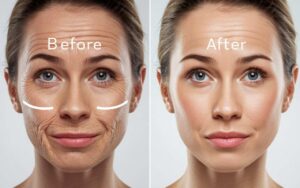
Consultation and Preparation
It is essential to get a comprehensive consultation with a trained and experienced practitioner before having a PDO thread lift. During this scheduling, the practitioner will evaluate your skin, discuss your desired look, and decide if PDO threads are the best choice for you. To determine whether you are a good candidate for the operation, they will also review your medical history and any possible dangers or side effects.
Aspirin, ibuprofen, and vitamin E are a few examples of drugs and supplements that may need to be avoided to reduce the chance of bleeding or bruising during treatment. Smoking and alcohol are also advised in the days preceding treatment, as they may hinder the healing process.
The Procedure Step-by-Step
- Anesthesia: A local anesthetic is utilized to numb the treatment region before the process starts. This guarantees the patient’s comfort during the entire procedure.
- Insertion of Threads: The practitioner inserts the PDO threads into the skin using a cannula or fine needle. The threads are inserted carefully to accomplish the required lifting and contouring results. The patient’s goals and the particular locations being treated will determine how many threads are utilized and where they are placed.
- Adjustment: The practitioner may make minor changes after the threads are in place to provide the best possible outcome. Getting the right lift can entail carefully tugging or adjusting the threads. After that, the insertion locations are cleaned, and the thread ends are cut.
- Final Touches: To lessen discomfort and lower the chance of infection, the medical professional may administer a calming cream or ointment to the treated regions after the treatment. Generally speaking, the process takes thirty to sixty minutes, depending on how many locations are treated.
PDO Threads Recovery and Aftercare
Appropriate recovery and aftercare following a PDO thread lift are essential for optimizing outcomes and reducing risks. This is a thorough guide explaining what to anticipate and how to take care of your skin after the procedure:
Immediate Post-Treatment Care
It is common for the treated areas to swell, bruise, and turn red in the early days after a PDO thread lift. Usually, these side effects go away in a few days to a week. To stop the threads from moving and lower the chance of infection, it’s critical to refrain from touching or rubbing the treated regions during this period. Applying cold compresses to the afflicted areas during the first 24 to 48 hours might help reduce swelling and discomfort.
Daily Care
To prevent irritation, use a gentle, non-abrasive cleanser to clean the treated areas daily. It is best to avoid using exfoliants or abrasive scrubs that could worsen irritation. Keeping the skin hydrated is also crucial; to promote healing and preserve skin elasticity, apply a light moisturizing lotion or serum. Furthermore, to reduce the chance of infection and discomfort, it is suggested to refrain from wearing makeup to the treated regions for at least 24 hours.
Activities to Avoid
It is crucial to avoid difficult exercise or activities that result in profuse perspiration in the weeks after the surgery. This will stop the swelling from worsening and the threads from getting tangled. For at least a week, refrain from subjecting the treated regions to extreme heat sources like saunas, hot tubs, or direct sunlight. The healing process may be hampered by such heat exposure. To guarantee that the threads settle correctly and without interruption, it is also advised to refrain from receiving any other facial treatments for a few weeks, such as chemical peels or laser operations.
Long-Term Care
Attending all planned follow-up sessions with your practitioner is a necessary part of long-term care to track your progress and resolve any issues. A healthy lifestyle that comprises a balanced diet and adequate hydration increases the duration of your results and supports general skin health. Sun protection is also essential; protect the treated areas from UV exposure (which can accelerate aging and alter outcomes) by using a sunscreen with a high SPF.
By following these recovery and aftercare instructions, you can guarantee the best possible outcome from your PDO thread lift and maintain the general health and appearance of your skin.
PDO Threads Side Effects
Although PDO thread lifts are typically safe, there may be some adverse consequences. Below is a thorough description of every possible adverse effect related to the procedure:
Bruising
One of the most frequent side effects after a PDO thread lift is bruises. This happens because the threads are inserted into the skin, which may rupture tiny blood vessels. Most bruises are not very severe and go away in a week or two. Immediately following the surgery, applying cold compresses can help minimize the number of bruises.
Infection
A rare yet dangerous side effect that can happen if the insertion sites are contaminated is infection. To reduce this danger, proper aftercare is essential. This includes cleaning the treated areas and refraining from rubbing or scratching them. Increased redness, warmth, swelling, and discharge are indicators of infection. If you experience these symptoms, see your doctor right away.
Pain
It is acceptable to expect some soreness or pain after the PDO thread lift. This is usually right and may be controlled with over-the-counter pain medication. The pain usually goes away after a few days. It’s critical to get medical attention if the pain is severe or chronic.
Inflammation
One of the most frequent side effects is swelling or inflammation in the treated areas. This is a normal reaction to the threads being inserted, and it normally goes away in a few days to a week. Inflammation can be lessened by elevating the head and applying cold compresses.
Bleeding
C bleeding can happen at the insertion sites, especially if blood vessels are injured during the process. It is usually minimal and under the practitioner’s control. Reporting prolonged or severe bleeding to your healthcare physician is advised.
Thread Migration
When PDO threads move from their intended location, it’s known as thread migration, which might result in unequal outcomes or distinct contours. Although rare, your practitioner can control this adverse effect with follow-up adjustments.
Allergic Reaction
A rare but possible side effect for some people is an allergic reaction to the PDO threads. Itching, redness, or swelling at the insertion sites are likely symptoms. Seeking medical assistance right away is essential if an allergic response is anticipated.
Nerve Injury
Nerve damage is a rare but dangerous adverse effect that might cause transient numbness or altered sensation in the treated areas. This happens if the threads unintentionally harm surrounding nerves. If there is a suspicion of nerve damage, immediate medical attention is needed.
Snapping of Threads
On rare occasions, if the PDO threads are not correctly attached or too much force is used during the process, they may break or snap. This could have an impact on the outcomes and call for further care to be fixed.
Asymmetry
Asymmetry may result if the skin heals unevenly or if the threads are not uniformly spaced. This adverse effect can typically be addressed with follow-up modifications to obtain a balanced appearance.
Hair Loss
Rarely, if PDO threads are positioned where hair follicles are present, they may cause temporary hair loss. This is normally reversible, and hair growth usually resumes once the body absorbs the threads.
Erythema
Skin redness, or erythema, is a frequent side effect that disappears in a few days. It happens due to the body’s normal inflammatory reaction to the inserted threads.
Sensitivity to Light
Inflammation and discomfort following the operation may cause increased sensitivity to light. Usually only briefly present, this sensation should disappear as the skin heals.
Skin Dimpling or Irregularity
When the threads are positioned unevenly or too near the skin’s surface, they might cause dimpling or irregularities. Adjustments or follow-up treatments to smooth out the appearance can help with this.
The duration and intensity of each of these adverse effects vary. Before having a PDO thread lift, it’s crucial to discuss potential hazards with your practitioner to ensure you’re aware of them and ready for the treatment.
Who Is a Good Candidate for PDO Threads?
PDO thread lifts are useful for people who want to enhance their facial contours without surgery but have mild to severe skin laxity. People in their 30s to 50s who start noticing wrinkles, fine lines, and sagging skin are the perfect candidates for the surgery. Candidates should be aware that while PDO threads provide a natural-looking lift, the results are not as dramatic as those of a typical facelift, so they must have reasonable expectations. Ideal candidates are also often in good health and do not have any diseases that could impede recovery or increase the risk of complications.
Who Should Avoid PDO Threads?
Even though PDO thread lifts are usually safe for many people, certain persons might need to be better candidates. Patients can require more intrusive procedures, such as a surgical facelift, for severe skin laxity to get the desired effects. Those who have a history of keloid scarring may be more likely to experience severe scarring following the surgery. Furthermore, PDO thread lifts should not be performed on pregnant or nursing mothers, as the safety of these aesthetic procedures has not been well investigated during these times.
Comparing PDO Threads to Other Cosmetic Treatments
PDO Threads vs. Dermal Fillers
While dermal fillers and PDO threads can both diminish wrinkle visibility and improve facial contours, their intended applications and modes of operation are different. PDO threads usually tighten and raise drooping skin, while dermal fillers increase the volume in the areas with lost fat or collagen. Sometimes, the two operations are combined for a more complete facial rejuvenation.
PDO Threads vs. Botox
Popular cosmetic procedure Botox temporarily paralyzes the muscles that cause dynamic wrinkles, like forehead lines and crow’s feet. Botox does not treat drooping skin; in contrast, PDO threads stimulate collagen formation and lift the skin. Nonetheless, PDO threads can elevate the skin, and Botox can smooth out expression lines, so the two procedures can work in tandem.
PDO Threads vs. Surgical Facelift
Individuals with considerable skin laxity can achieve the most dramatic and durable effects with a surgical facelift. But drawbacks include a lengthier recovery period, higher expenses, and a larger chance of problems. PDO thread lifts are the best option for people with mild to moderate sagging who are not ready for surgery since they provide a less invasive alternative with more subtle results.
Cost of PDO Thread Lifts
Factors Influencing the Cost
A PDO thread lift’s price might vary significantly based on several variables, such as:
- Geographic location: Prices may be higher in larger cities or areas with a higher cost of living.
- Practitioner’s experience and reputation: More experienced and highly regarded practitioners may charge higher fees.
- Number of threads used: The more threads required to attain the desired results, the higher the cost.
- Treatment areas: Larger or multiple treatment areas may increase the overall cost of the procedure.
Average Cost
Depending on the previously listed parameters, PDO thread lifts can cost an average of $1,500 to $4,500. It is imperative that you discuss the cost during your appointment to ensure that you are fully aware of the costs involved. Certain practitioners might provide payment plans or financing options to lower the cost of therapy.
The Future of PDO Threads
Advancements in PDO Thread Technology
PDO thread lifts are becoming increasingly popular, and as a result, continuous technological and procedural improvements are making the operation even safer and more efficient. Combination medicines, better insertion methods, and newly designed threads are constantly improving outcomes and lowering the risk of problems.
Growing Popularity
PDO thread lifts are anticipated to grow in popularity in the upcoming years as more people look for non-surgical methods for face rejuvenation. Their capacity to yield enduring, natural-looking outcomes with low recovery periods makes them a compelling choice for people seeking to improve their looks without surgery.
Conclusion
PDO threads provide a flexible and efficient non-surgical option for those looking for facial rejuvenation. PDO thread lifts are becoming popular for people wishing to improve their appearance because of their capacity to lift sagging skin, promote collagen synthesis, and produce natural results. This guide provides all the information you need to understand PDO threads, whether you’re thinking about this treatment for the first time or want to know more about its advantages.
It is imperative that you speak with a skilled professional before having any cosmetic operation done in order to discuss your expectations, determine whether you are a good candidate for the process, and determine your goals. PDO threads may give you a youthful, rejuvenated look that you’ll enjoy, with the correct maintenance and knowledge.
Frequently Asked Questions (FAQ)
The PDO thread lift is generally well-tolerated, with most patients experiencing only mild discomfort. Local anesthesia is used to minimize pain during the procedure.

